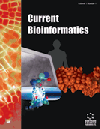
Full text loading...

Since each dimension of a tensor can store different types of genomics data, compared to matrix methods, utilizing tensor structure can provide a deeper understanding of multi-dimensional data while also facilitating the discovery of more useful information related to cancer. However, in reality, there are issues such as insufficient utilization of prior knowledge in multi-omics data and limitations in the recovery of low-tubal-rank tensors. Therefore, the method proposed in this article was developed.
e: In this paper, we proposed a low transformed tubal rank tensor model (LTTRT) using a spatial-tubal constraint to accurately partition different types of cancer samples and provide reliable theoretical support for the identification, diagnosis, and treatment of cancer.
In the LTTRT method, the transformed tensor nuclear norm based on the transformed tensor singular value decomposition is characterized by the low-rank tensor, which can explore the global low-rank property of the tensor, resolving the challenge of the tensor nuclear norm-based method not achieving the lowest tubal rank. Additionally, the introduction of weighted total variation regularization is conducive to extracting more information from sequencing data in both spatial and tubal dimensions, exploring cross-correlation features of multiple genomic data, and addressing the problem of overlooking prior knowledge from various perspectives. In addition, the L1-norm is used to improve sparsity. A symmetric Gauss‒Seidel-based alternating direction method of multipliers (sGS-ADMM) is used to update the LTTRT model iteratively.
The experiments of sample clustering on multiple integrated cancer multi-omics datasets show that the proposed LTTRT method is better than existing methods. Experimental results validate the effectiveness of LTTRT in accurately partitioning different types of cancer samples.
The LTTRT method achieves precise segmentation of different types of cancer samples.